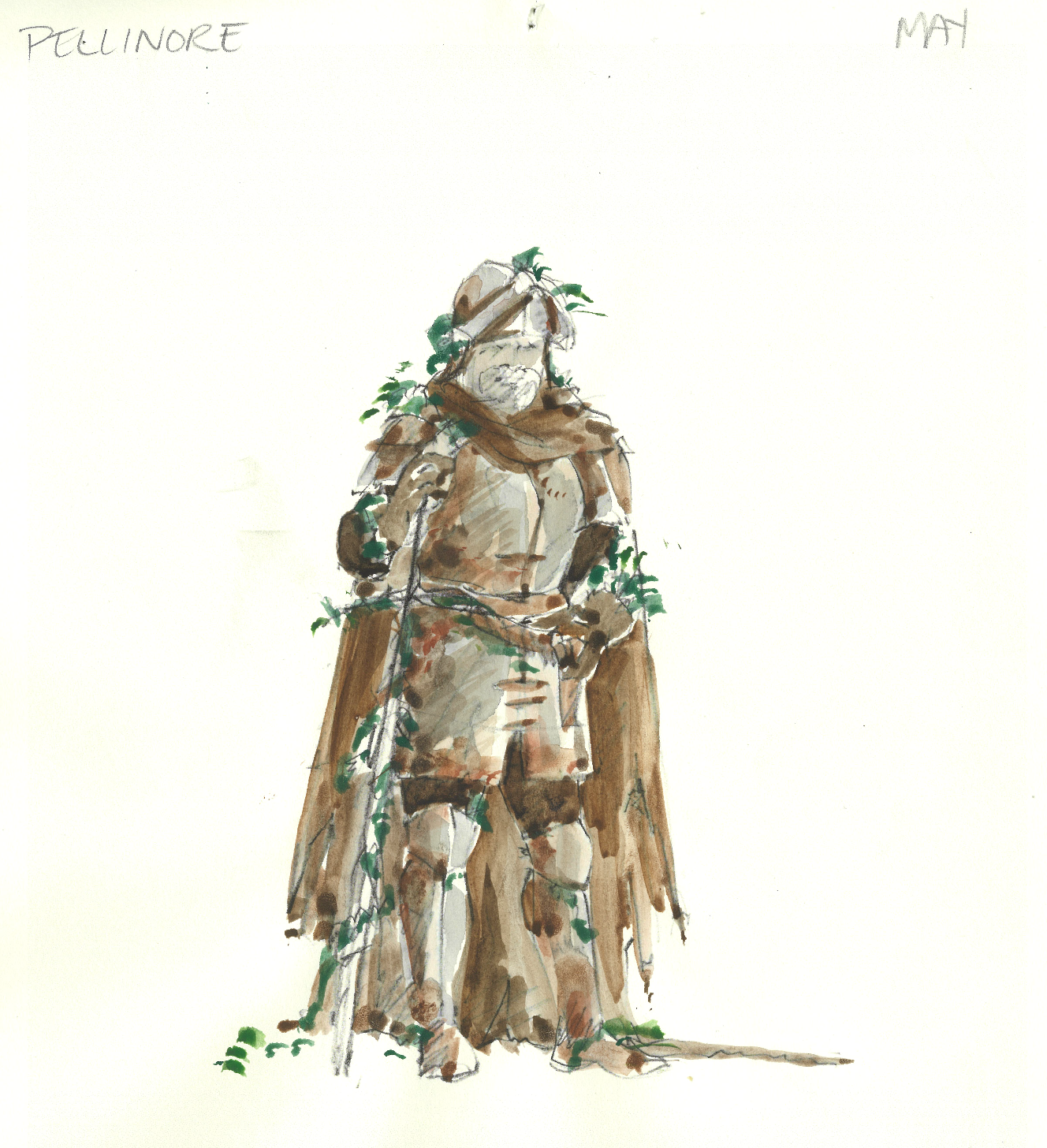Interview: Jennifer Moeller Talks About Creating More Than 100 Dazzling Costumes for Broadway’s Camelot
The Tony-nominated designer reveals how she helped bring the court of King Arthur to life.
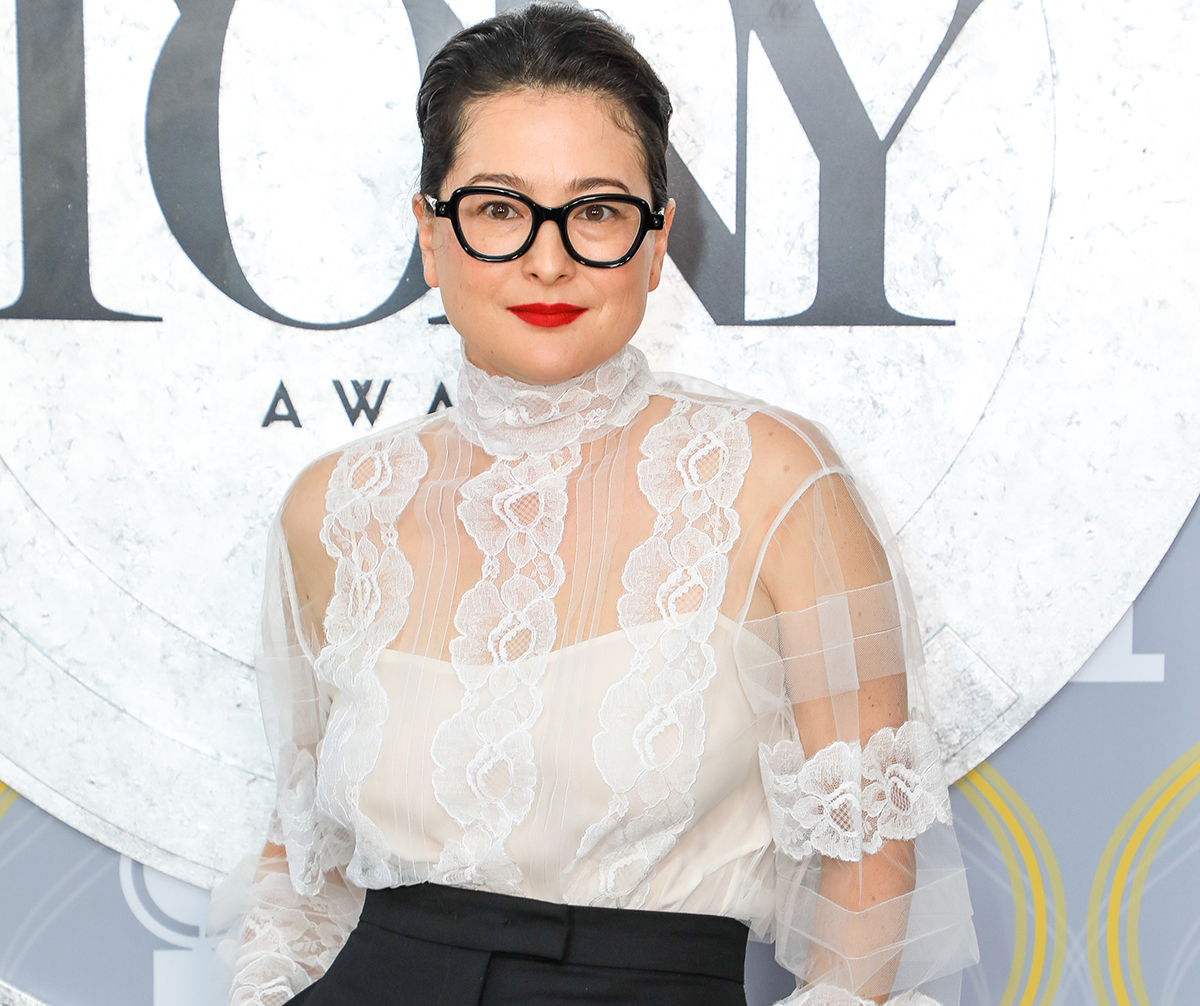
(© Tricia Baron)
When Phillipa Soo first appears as Guenevere in the Lincoln Center Theater revival of Camelot, she wears leather pants and a black cape. “Right off the bat we wanted to show that this is a Guenevere that’s different from the previous iterations of her,” says costume designer Jennifer Moeller. “She’s a stronger woman with agency and influence in the court of King Arthur.”
With an updated book by Aaron Sorkin and a classic score by Alan Jay Lerner and Frederick Loewe, this revival combines the modern with the medieval, and that set the tone for Moeller, who was nominated for a Tony award for her designs. “It’s a Camelot like you’ve never seen before,” she says. “It’s the same beautiful songs, but a totally new script. And the clothes needed to emulate that.”
Moeller starts any period piece by researching what is authentic for the time. For this musical, she also looked at what was happening on runways in modern fashion, and then she combined the two, knowing that many audience members would have specific ideas about what Camelot should look like.
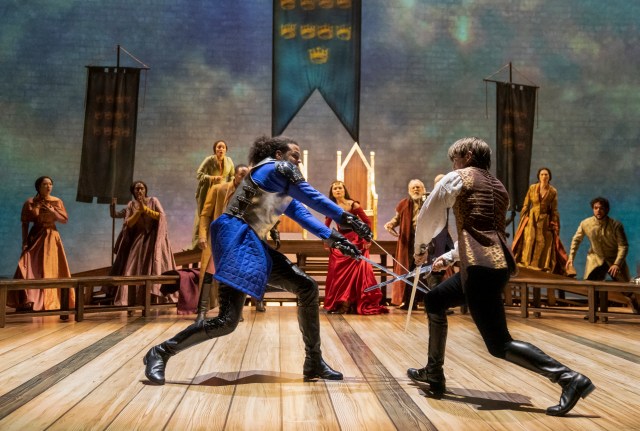
(© Joan Marcus)
“Design-wise, it’s honoring what people are coming to the theater with, while also giving them something new to look at,” she says. “I really want them to think that they’re looking at this place where the weather is perfect and the people are sexy. And I want them to feel like they’re taken away to this mythical place. That was the greatest gift and fun challenge of the piece.”
Moeller has worked on other period pieces like the TV show Dickinson, as well as plays with contemporary settings like Clyde’s, but no matter what time a show takes place in, the guiding principle is the same. “You’re trying to tell a story through the clothes and give the audience a hint about who the characters are,” she says.
In the case of Arthur, played by Andrew Burnap, Moeller wanted his clothes to show him as relatable and imperfect — somebody whom the audience could see themselves in. This is, after all, the man who pulled a sword out of a stone at age 15 and became king when he was just a boy. At the beginning of the show, when he first meets Guenevere, he is dressed very simply in black pants and a light jacket, and she mistakes him for a peasant. “I feel like you could go buy that jacket at Saks,” Moeller says of his first outfit. As the show continues and he becomes burdened by the responsibilities of Camelot, she dresses him in gold armor to weigh him down literally and figuratively.
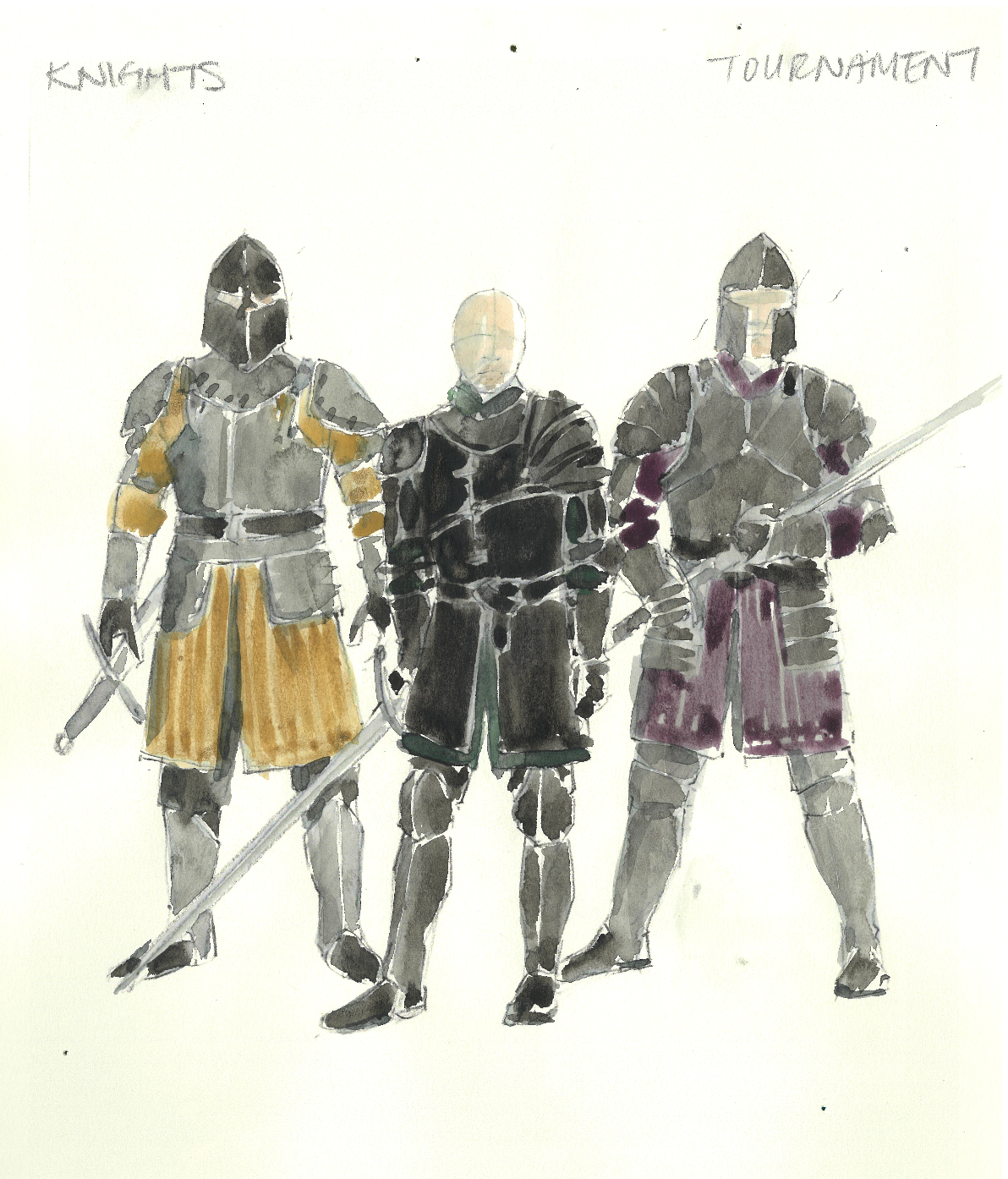
(image provided by Lincoln Center Theater)
The goal was different with Arthur’s friend and most esteemed knight, Lancelot, played by Jordan Donica. “With Lancelot, we want to show that he’s a foreigner, that he’s different,” she says. “When he arrives at the court of King Arthur, he starts a little bit as a braggart and then he softens and assimilates.” She outfitted him and the other knights in real period-inspired metal armor, but it’s unusual to see onstage. In the past, Moeller has used leather for armor, but only real metal would have the realistic luster she wanted.
“The actors would feel the weight of it in a way that would inform the way they hold their bodies, and it makes noise in this great way,” she says. “In some of the numbers like ‘Fie [on Goodness],’ it almost becomes like an instrument with the way they’re moving their bodies and you can hear the clanking of the armor. That was an exciting way to look at a new way of doing armor onstage.” In order to make sure the actors could move in the way they needed to, she didn’t use full suits of metal armor. The breast plates are made of leather, and the metal is used in strategic places to enhance the natural silhouette of the body.
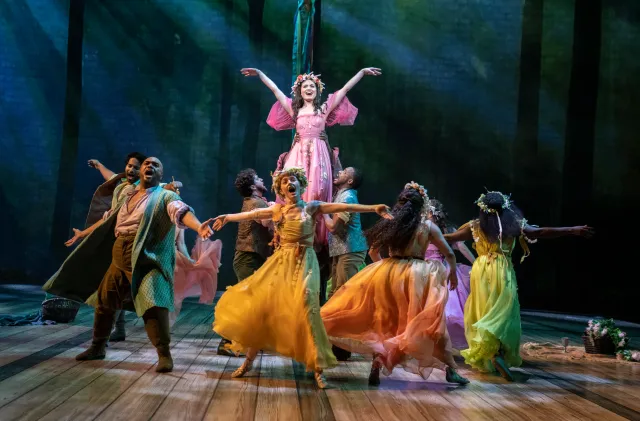
(© Joan Marcus)
Unlike a contemporary show, where clothes can be bought, everything had to be made. “You can’t go to the medieval section of Macy’s and pick things up,” she says, adding that creating the 100-plus costumes was a global effort. Moeller found a vendor in Ukraine to make the armor. A tailor in Budapest made a lot of the menswear. The ribbons for Guenevere’s pink dress in “The Lusty Month of May” came from Japan, and the embroidery was done in New York. The dress is covered in fine ribbon that is embroidered through the tulle over the top of the dress.
The effect is an explosion of color and lightness and texture that represents spring, a stark contrast to the dark winter colors at the beginning and end of the show. “We’re intentionally starving the audience for color,” Moeller says. “You get hints of it in that first dress Guenevere wears that’s midnight blue, almost black, but in certain moments it glimmers blue. We slowly start to introduce some color and then there’s this big explosion that happens in spring.”
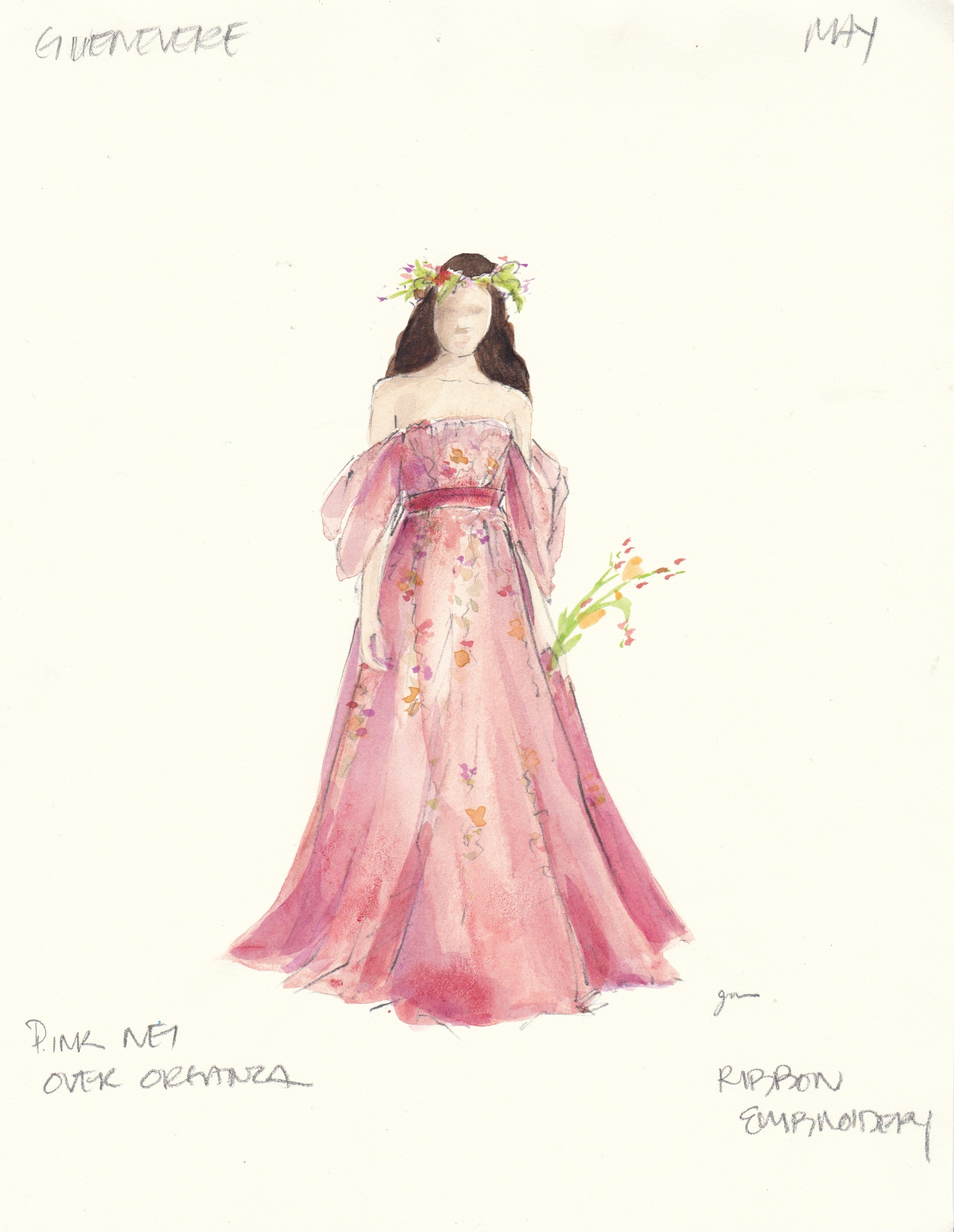
Moeller was influenced not only by the story but also by the actors. “I really want the clothes to fit the actor and not be put upon them,” she says. This was particularly true of Marilee Talkington’s interpretation of Morgan Le Fey, the mother of Arthur’s illegitimate child. “She was a sexy, sexy scientist,” says Moeller. “And I was like, ‘I’m going to give her a dress that’s going to be just as sexy. It’s going to have a really deep V and it’s going to have a really amazing texture that feels like wood.’ She wasn’t a weird witch like has been in the past. She was a strong scientist woman, and I wanted to give her strong lines.”
Moeller had a lot of fun with the “beautiful frocks,” but the costume she loves most might be surprising. It’s the one that elderly Pellinore, played by Dakin Matthews, appears in before being taken in by Arthur. “During the celebration of May, he arrives in his rusty armor,” she says. “He comes out of the brambles, and he’s got leaves and vines stuck in his armor and his cape. That was one of my favorites.”
